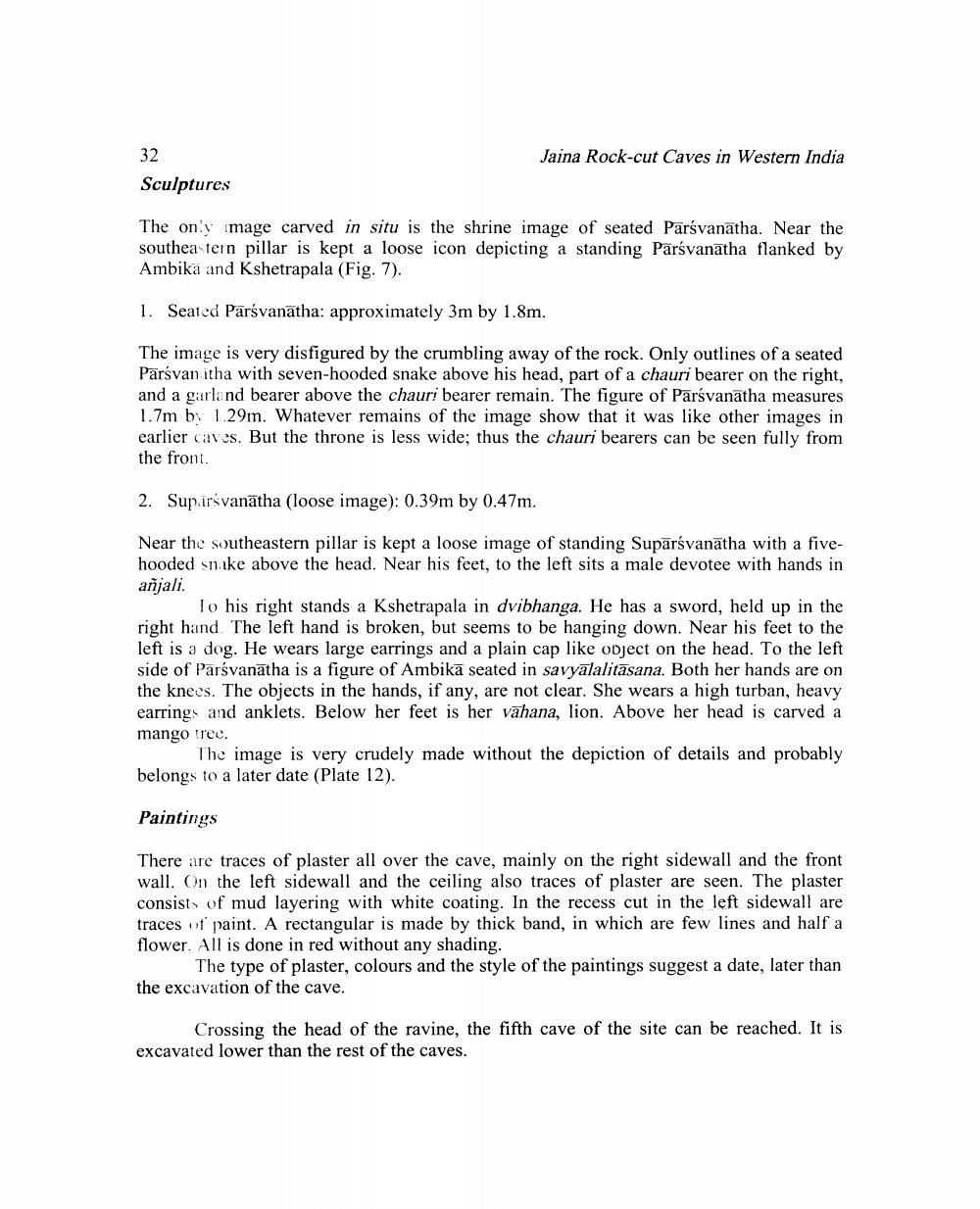________________
Jaina Rock-cut Caves in Western India
Sculptures
The only mage carved in situ is the shrine image of seated Parsvanatha. Near the southea tern pillar is kept a loose icon depicting a standing Parsvanatha flanked by Ambika and Kshetrapala (Fig. 7).
1. Sealed Parsvanatha: approximately 3m by 1.8m.
The image is very disfigured by the crumbling away of the rock. Only outlines of a seated Parśvan itha with seven-hooded snake above his head, part of a chauri bearer on the right, and a garland bearer above the chaur: bearer remain. The figure of Parsvanatha measures 1.7m b 1.29m. Whatever remains of the image show that it was like other images in earlier caves. But the throne is less wide; thus the chauri bearers can be seen fully from the front.
2. Suparsvanātha (loose image): 0.39m by 0.47m.
Near the southeastern pillar is kept a loose image of standing Suparsvanatha with a fivehooded snake above the head. Near his feet, to the left sits a male devotee with hands in añjali.
To his right stands a Kshetrapala in dvibhanga. He has a sword, held up in the right hand. The left hand is broken, but seems to be hanging down. Near his feet to the left is a dog. He wears large earrings and a plain cap like object on the head. To the left side of Parsvanatha is a figure of Ambikā seated in savyalalitāsana. Both her hands are on the knees. The objects in the hands, if any, are not clear. She wears a high turban, heavy earrings and anklets. Below her feet is her vahana, lion. Above her head is carved a mango tree.
The image is very crudely made without the depiction of details and probably belongs to a later date (Plate 12).
Paintings
There are traces of plaster all over the cave, mainly on the right sidewall and the front wall. On the left sidewall and the ceiling also traces of plaster are seen. The plaster consists of mud layering with white coating. In the recess cut in the left sidewall are traces of paint. A rectangular is made by thick band, in which are few lines and half a flower. All is done in red without any shading.
The type of plaster, colours and the style of the paintings suggest a date, later than the excavation of the cave.
Crossing the head of the ravine, the fifth cave of the site can be reached. It is excavated lower than the rest of the caves.




